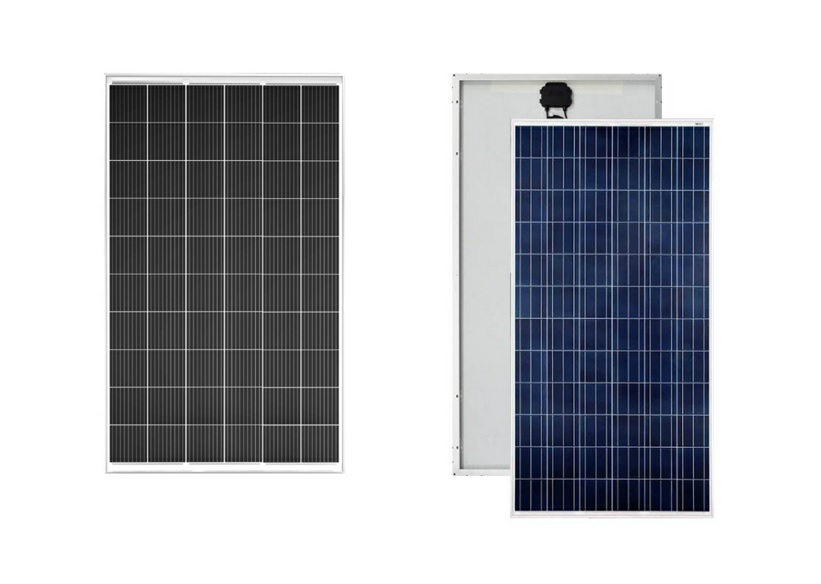1. The appearance of the module. From the top of the appearance, the four corners of the monocrystalline silicon cell are arc-shaped and there is no pattern on the surface.
The four corners of the polycrystalline silicon cell are square corners, and the surface has patterns like ice flowers.
2 2. For users, there is not much difference between monocrystalline silicon cells and polycrystalline silicon cells in the use of components. Their life and stability are very good. The average conversion efficiency of monocrystalline silicon cells is higher than that of polycrystalline silicon, but the current price is higher than that of polycrystalline silicon. 3 3. In the module manufacturing process, polycrystalline cells have fewer production process steps than monocrystalline cells. Therefore, the energy consumed in the manufacturing process of polycrystalline silicon solar cells is slightly less than that of monocrystalline silicon solar cells, but the power generation of monocrystalline solar cells is higher. Calculating the energy consumption ratio is not much different.
Comparison of monocrystalline photovoltaic modules and polycrystalline photovoltaic modules
1) Looking at the history, the application of monocrystalline photovoltaic panels was earlier than that of polycrystalline photovoltaic panels. Monocrystalline is the big brother, and polycrystalline is the younger brother, but the younger brother developed faster later.
2) Depending on the amount, the application of polysilicon in power stations is much higher than that of monocrystalline silicon, with monocrystalline silicon accounting for 30% and polycrystalline silicon accounting for 70%.
3) Looking at the appearance, the monocrystalline silicon is dark blue, almost black, the polycrystalline silicon is sky blue, and the color is bright, the single crystal cell is rounded at four corners, and the polycrystalline cell is square.
4) Looking at the conversion rate, the efficiency of single crystal is higher than that of polycrystal, about 10%-20%.
5) Looking at the cost, the cost of single crystal is slightly more expensive than that of polycrystalline. Different manufacturers have different costs. The market price per watt is five cents to one dime.
6) The measured data of attenuation shows that single crystal and polycrystal have their own advantages, and it is impossible to distinguish the speed of attenuation from single crystal and polycrystal. Relatively speaking, the product quality (sealing degree, whether there is a magazine, whether it is cracked), has a greater impact on the attenuation.
7) Looking at the price/performance ratio, at present, the price/performance ratio of polycrystalline is slightly higher than that of single crystal. It is only for now. With the reduction of the cost of single crystal components, a reversal may occur in a few years.






